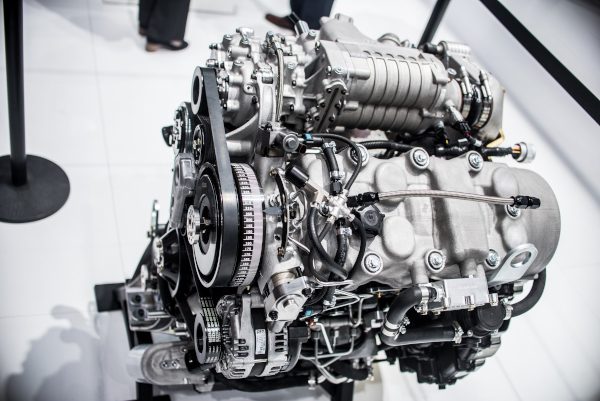International Advanced Centre for Powder Metallurgy & New Materials (ARCI), an autonomous R&D Centre of Department of Science and Technology (DST), has developed ultrafast laser surface texturing technology, which can improve the fuel efficiency of internal combustion engines.
Laser surface micro-texturing, which offers precise control of the size, shape and density of micro-surface texture features has gained momentum as a way to control friction and wear. In this technology, a pulsating laser beam creates micro-dimples or grooves on the surface of materials in a very controlled manner. Such textures can trap wear debris when operating under dry sliding conditions and sometimes provide effects like enhancing oil supply (lubricant reservoir) which can lower friction coefficients and may enable reduced wear rate.
The texture surfaces were created on automotive internal combustion engine components, piston rings and cylinder liners using 100 fs pulse duration laser. The micro dimples of 10-20 μm diameter and about 5-10 μm deep which have been created with laser beams had a regular pattern. The created textures were tested in an engine test rig under different speeds and temperatures of coolant and lubrication oil, and it was observed that there was a 16% reduction in the lube oil consumption with the use of texture on the piston rings. The 10-hour lube oil consumption test shows that the blowby substantially reduced with textured rings.
Fabrication of a pattern of micro dimples or grooves on the surface of materials results in a change in surface topography which generates additional hydrodynamic pressure, thereby increasing the load-carrying capacity of the surfaces. Hence these become useful for trapping wear debris when operating under dry sliding conditions and sometimes provide effects like enhancing oil supply (lubricant reservoir) which can lower friction coefficients and may enable reduced wear rate.
In order to control the friction, it is important to understand the mechanisms which occur during the conformal or non-conformal contact in dry and lubricated conditions. Ultrafast lasers create micro or nano features without vacuum conditions. These features are smaller than the diffraction-limited laser focal spot diameter – a unique property of ultrashort duration laser-matter interaction. The process is a thermal, and pulse durations are orders of magnitude smaller than thermal diffusion times.
Source: PIB
Image Courtesy: ArsTechnica
You may also like
-
New Heat-Based Approach To Cancer Treatment Can Reduce Chemotherapy Doses
-
Scientists Take A Major Step Towards Unification Of Classical & Quantum Gravity
-
India Graphene Engineering and Innovation Centre (IGEIC) Under the Vision of Viksit Bharat@2047 Launched
-
New High-Performance Gas Sensor can Monitor Low Level Nitrogen Oxides Pollution
-
Antidepressant Drug can be Repurposed for Treating Breast Cancer
